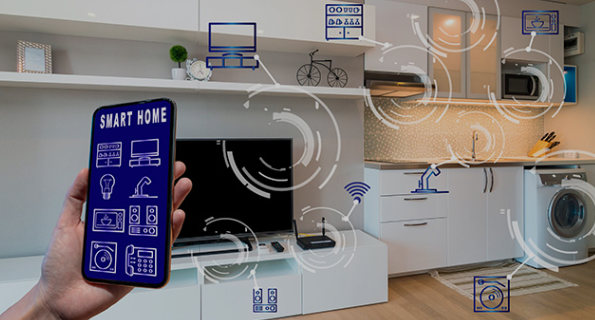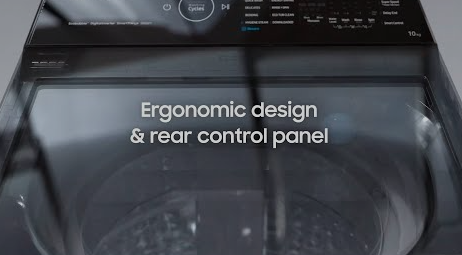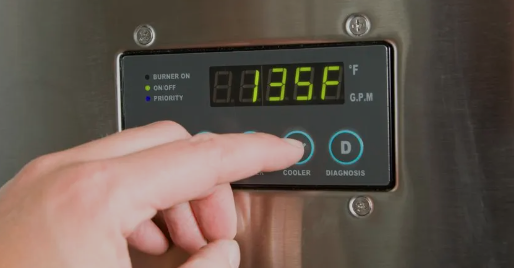High Quality Appliances Designed For Minimal Energy Consumption.

In an era marked by a growing consciousness towards environmental sustainability and energy conservation, the demand for high-quality appliances designed for minimal energy consumption has reached new heights. Consumers today are not only seeking cutting-edge features and sleek designs but are also prioritizing energy efficiency in their household appliances. This shift in consumer preferences has prompted manufacturers to innovate and create a new generation of appliances that not only excel in performance but also contribute to a greener and more sustainable future.
1. The Evolution of Energy-Efficient Appliances
The journey towards energy-efficient appliances has been a gradual evolution, driven by advancements in technology and a heightened awareness of the environmental impact of energy consumption. Early appliances were often criticized for their inefficiency and excessive energy use. However, as research and development progressed, manufacturers began incorporating energy-saving technologies into their designs.
Modern high-quality appliances are a testament to this evolution. From refrigerators and washing machines to ovens and air conditioners, these appliances are engineered with a focus on minimizing energy consumption without compromising functionality. Energy-efficient compressors, smart sensors, and advanced insulation are just a few examples of the innovative features that contribute to the superior performance of these appliances while keeping energy usage in check.
2. The Role of Design in Energy Efficiency
The design of appliances plays a pivotal role in determining their energy efficiency. Bold strides have been made in the materials used, form factor, and overall engineering of these appliances to ensure optimal energy utilization. Sleek and modern designs not only enhance the aesthetic appeal but also contribute to efficient operation.
For instance, refrigerators with well-designed compartments and adjustable shelving systems optimize storage space, reducing the need for frequent door openings and thus conserving energy. Similarly, front-loading washing machines with innovative drum designs not only improve cleaning performance but also require less water and energy compared to traditional top-loading models.
3. Cutting-Edge Technologies for Minimal Energy Consumption
The heart of high-quality appliances lies in the integration of cutting-edge technologies that maximize efficiency. Manufacturers are investing heavily in research and development to incorporate features such as:
3.1 Smart Home Integration
Many appliances now come equipped with smart technology that allows users to monitor and control energy usage remotely. Smart thermostats in air conditioners, for example, can adapt to users’ habits, optimizing temperature settings for energy efficiency.
3.2 Inverter Technology
Inverter technology, prevalent in refrigerators and air conditioners, adjusts the compressor speed according to the required load. This eliminates the constant cycling on and off, leading to significant energy savings and a prolonged lifespan of the appliance.
3.3 Energy Star Certification
The Energy Star certification has become a hallmark of energy efficiency. Appliances that meet stringent criteria set by this program ensure consumers that they are investing in products designed to minimize energy consumption and environmental impact.
4. Sustainable Materials and Manufacturing Practices
Beyond the operational phase, the sustainability of high-quality appliances is also influenced by the materials used in their construction and the manufacturing processes involved. Manufacturers are increasingly turning to eco-friendly materials and adopting energy-efficient manufacturing practices to reduce the overall environmental footprint of their products.
Recyclable materials, low-impact production processes, and responsible sourcing of components are becoming standard practices within the industry. This holistic approach ensures that the lifecycle of these appliances aligns with the principles of sustainability from production to disposal.
5. Consumer Awareness and Education
As consumers become more environmentally conscious, there is a growing emphasis on educating the public about the benefits of choosing high-quality appliances designed for minimal energy consumption. Manufacturers are actively engaging in awareness campaigns, providing detailed information about the energy efficiency ratings of their products and offering tips on how consumers can further reduce their carbon footprint.
6. Future Outlook and Challenges
While the strides made in the development of high-quality appliances with minimal energy consumption are commendable, challenges persist. Affordability remains a barrier for some consumers, and widespread adoption of these appliances requires a balance between cost and energy efficiency. Continued research and innovation are necessary to make energy-efficient technologies more accessible to a broader demographic.
Additionally, as technology evolves, there is a need for standardized testing methods and certifications to ensure transparency and trust in the energy efficiency claims made by manufacturers. Collaboration between industry stakeholders, policymakers, and environmental organizations will play a crucial role in shaping a sustainable future for household appliances.
Conclusion
In conclusion, high-quality appliances designed for minimal energy consumption are at the forefront of a sustainable revolution in the household appliance industry. The marriage of innovative technologies, efficient design principles, and a commitment to sustainability is reshaping the way consumers interact with and perceive these essential devices. As these appliances continue to evolve, they not only enhance the quality of daily life but also contribute to a healthier planet, making them a bold choice for the environmentally conscious consumer of the 21st century.




